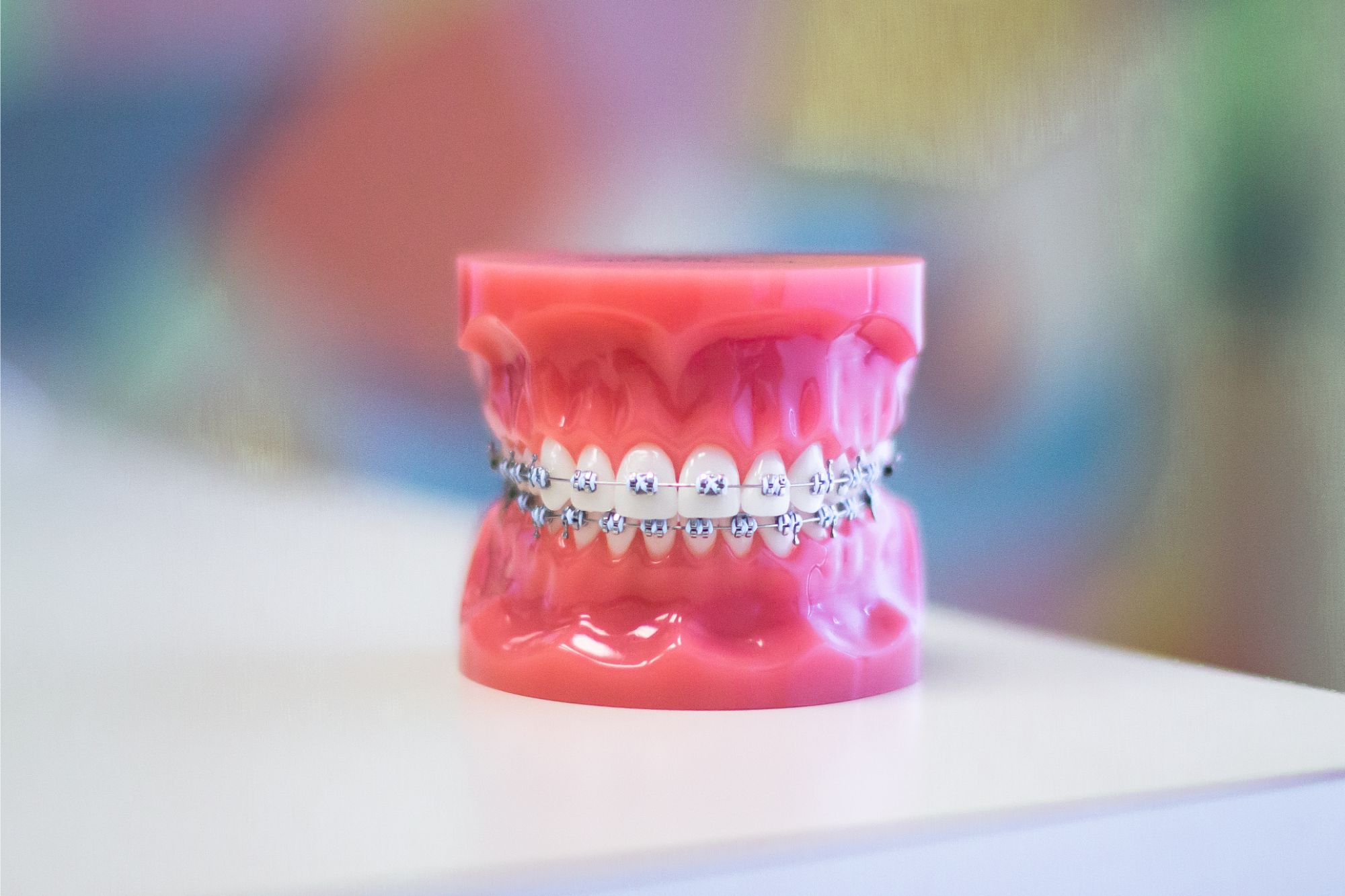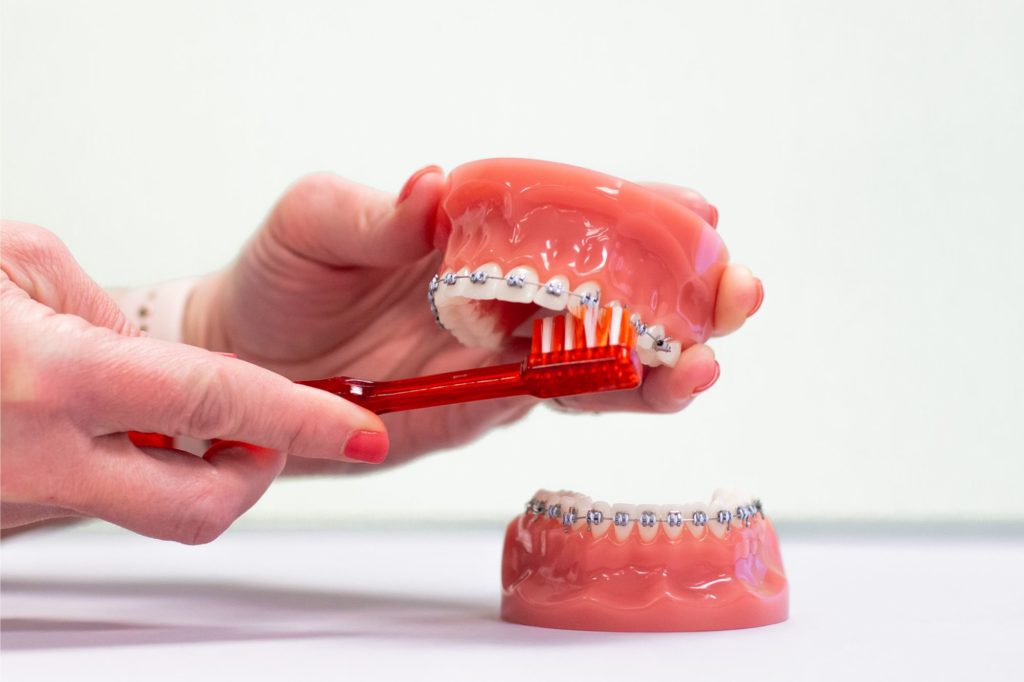Orthodontic Care
Caring for Braces
Dr. Roth is known for creating beautiful smiles. Here are some tips for taking care of your braces.
Tips for Keeping Your Braces In Top Condition
It’s crucial to maintain excellent oral hygiene during orthodontic treatment.
Regular brushing and flossing will help keep your teeth and gums in optimal health, ensuring your orthodontic treatment results in the healthiest smile possible.
After your braces are removed, you’ll appreciate the results of your diligent care with a healthy, attractive smile that lasts a lifetime!
Neglecting proper care of your braces could lead to white spots on your teeth after they’re removed, an undesirable outcome to avoid.

Taking Responsibility
Achieving the healthy, beautiful smile you desire requires teamwork between you, your family dentist, and Dr. Roth.
As the patient, your role is crucial. It’s your responsibility to ensure the success of your treatment. This starts with maintaining clean teeth and excellent dental hygiene while wearing braces.
Though proper dental care demands extra time and effort, the results are invaluable. Consistent care will help you achieve the best possible smile from your orthodontic treatment.
.
Understanding Plaque
Plaque, a sticky, colorless film of bacteria, food, and saliva, accumulates on your teeth and around braces. Neglecting to remove it can lead to swollen gums, bad breath, cavities, and permanent marks on your teeth.
As your Vacaville orthodontist, I recommend regular brushing to remove plaque. Our team teaches all patients the proper technique for flossing with braces to ensure thorough plaque removal.
Effective Cleaning Routine
Brush after every meal or snack to maintain oral hygiene. If immediate brushing isn’t possible, rinse your mouth well with water until you can brush.
Carry a travel toothbrush for brushing on the go. Additionally, thoroughly brush your teeth and braces nightly before bed, followed by flossing. This routine may take extra time, but it is essential for maintaining cleanliness.
Proper Brushing Technique
During braces treatment, mastering proper brushing techniques is vital. Pay attention to cleaning not only between teeth but also around brackets and wires. Here are some tips for effective brushing with braces:

Maintaining Your Oral Hygiene with Braces
- Choose the Right Tools: Use fluoride toothpaste and a soft, rounded-bristle toothbrush. Replace your toothbrush promptly when it shows signs of wear due to braces.
- Thorough Brushing Technique: Brush all parts of your braces and every tooth surface—fronts, sides, and backs. Include your tongue and the roof of your mouth. Your braces should look clean and shiny, with bracket edges clearly visible if you’re brushing correctly.
- Gentle Gum Care: Brush your gums gently and thoroughly, ensuring comprehensive oral hygiene.
- Rinse Effectively: Rinse your mouth thoroughly after brushing to remove any lingering debris.
- Inspect for Cleanliness and Damage: After brushing, inspect your teeth and braces under good lighting. Check for cleanliness and any loose or broken brackets. Contact Roth Orthodontics if you notice any issues that may require repair.
Flossing Tips
- Nightly Routine: Floss every night before bedtime to ensure thorough cleaning without feeling rushed.
- Using a Floss Threader: With braces, use a floss threader to easily maneuver dental floss under the archwire.
- Effective Technique: Clean carefully along and under the gumlines for comprehensive flossing results.
- Practice Makes Perfect: Flossing with braces may seem challenging initially but becomes easier with practice.
Additional Hygiene Aids
- Interproximal Brush: Helps reach under the archwire to remove plaque and food particles effectively.
- Prescription Fluoride Products: If prescribed, use once daily alongside an interproximal brush for enhanced fluoride protection.
- Power Toothbrush or Waterpik: Devices like the Oral-B Professional Series toothbrush can simplify and improve brushing efficiency.
Consequences of Poor Oral Hygiene
Maintaining good oral hygiene during orthodontic treatment is crucial to avoid potential issues:
- Plaque and Decay: Without proper care, plaque and trapped food can lead to enamel erosion, white marks, cavities, and gum disease.
- Decalcification Stains: Accumulated plaque around braces can cause permanent white stains on teeth.
- Periodontal Disease: Progresses through stages from gingivitis to periodontitis, causing gum irritation, pocket formation, and bone loss.
- Early gum disease is reversible with professional care and diligent home hygiene. Pay attention to signs like bleeding or swollen gums and follow the guidance of Dr. Roth and the staff to prevent these problems.
